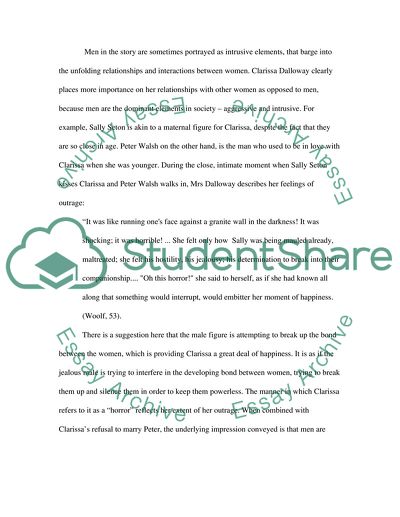Cite this document
(“Women in Virginia Woolfs Work Essay Example | Topics and Well Written Essays - 2000 words”, n.d.)
Women in Virginia Woolfs Work Essay Example | Topics and Well Written Essays - 2000 words. Retrieved from https://studentshare.org/literature/1544017-critically-examine-ways-in-which-virginia-woolfe-critiques-the-position-of-women-in-the-early-twentieth-century-in-mrs-dalloway-and-jacobs-room
Women in Virginia Woolfs Work Essay Example | Topics and Well Written Essays - 2000 words. Retrieved from https://studentshare.org/literature/1544017-critically-examine-ways-in-which-virginia-woolfe-critiques-the-position-of-women-in-the-early-twentieth-century-in-mrs-dalloway-and-jacobs-room
(Women in Virginia Woolfs Work Essay Example | Topics and Well Written Essays - 2000 Words)
Women in Virginia Woolfs Work Essay Example | Topics and Well Written Essays - 2000 Words. https://studentshare.org/literature/1544017-critically-examine-ways-in-which-virginia-woolfe-critiques-the-position-of-women-in-the-early-twentieth-century-in-mrs-dalloway-and-jacobs-room.
Women in Virginia Woolfs Work Essay Example | Topics and Well Written Essays - 2000 Words. https://studentshare.org/literature/1544017-critically-examine-ways-in-which-virginia-woolfe-critiques-the-position-of-women-in-the-early-twentieth-century-in-mrs-dalloway-and-jacobs-room.
“Women in Virginia Woolfs Work Essay Example | Topics and Well Written Essays - 2000 Words”, n.d. https://studentshare.org/literature/1544017-critically-examine-ways-in-which-virginia-woolfe-critiques-the-position-of-women-in-the-early-twentieth-century-in-mrs-dalloway-and-jacobs-room.


